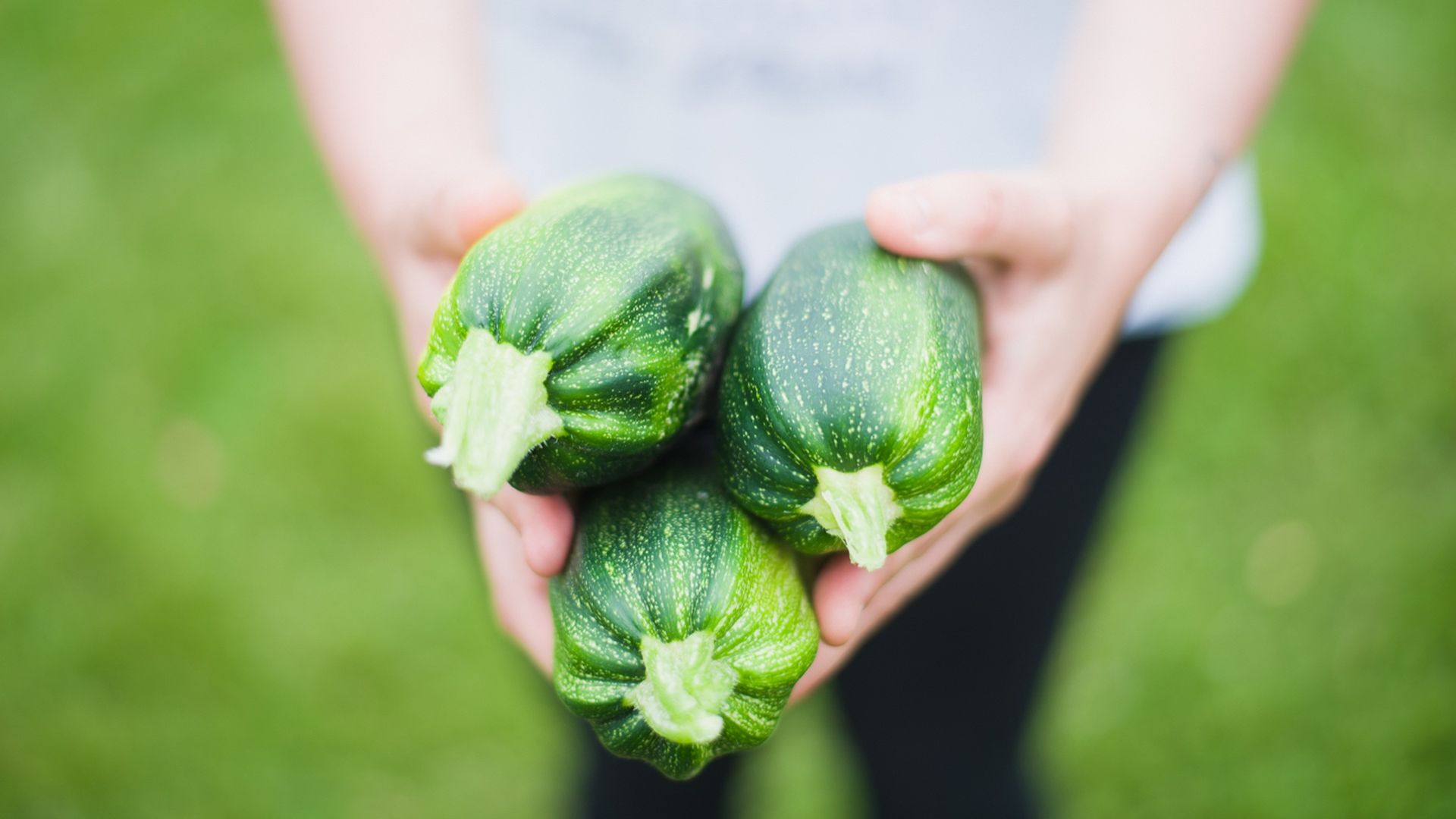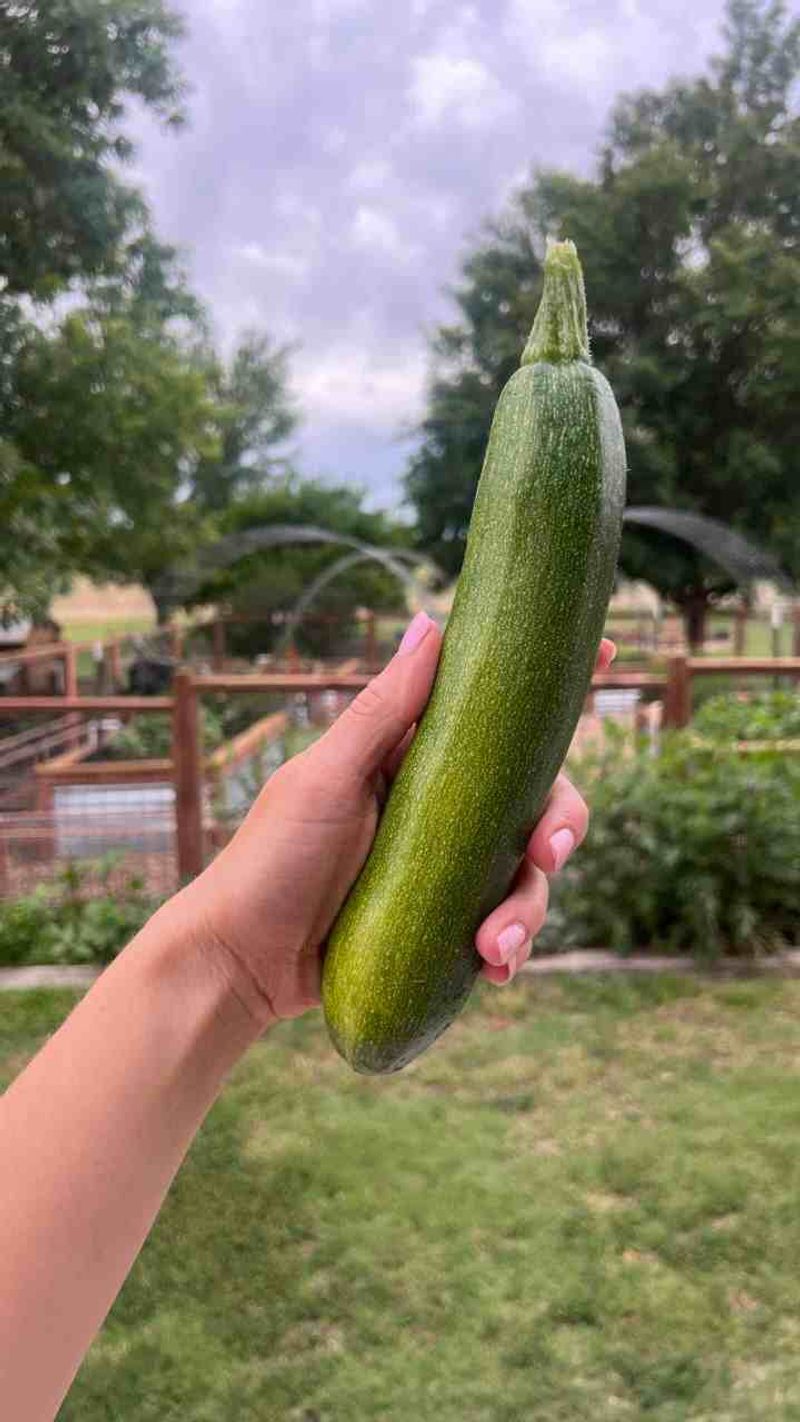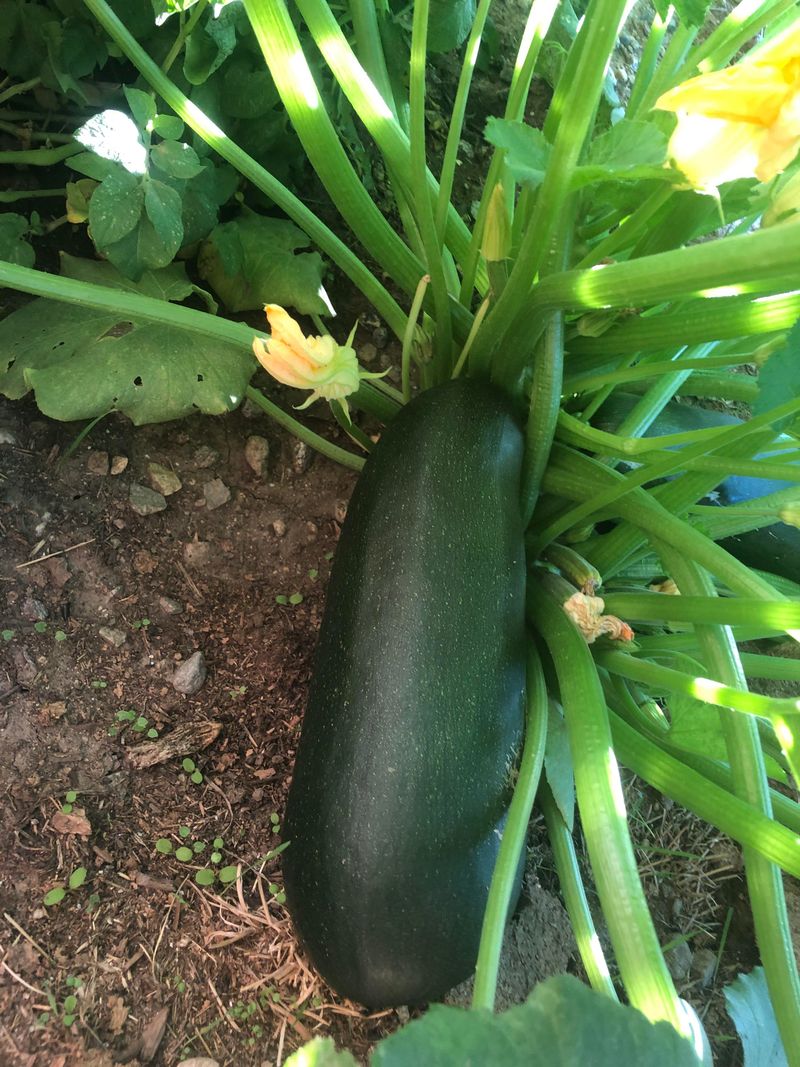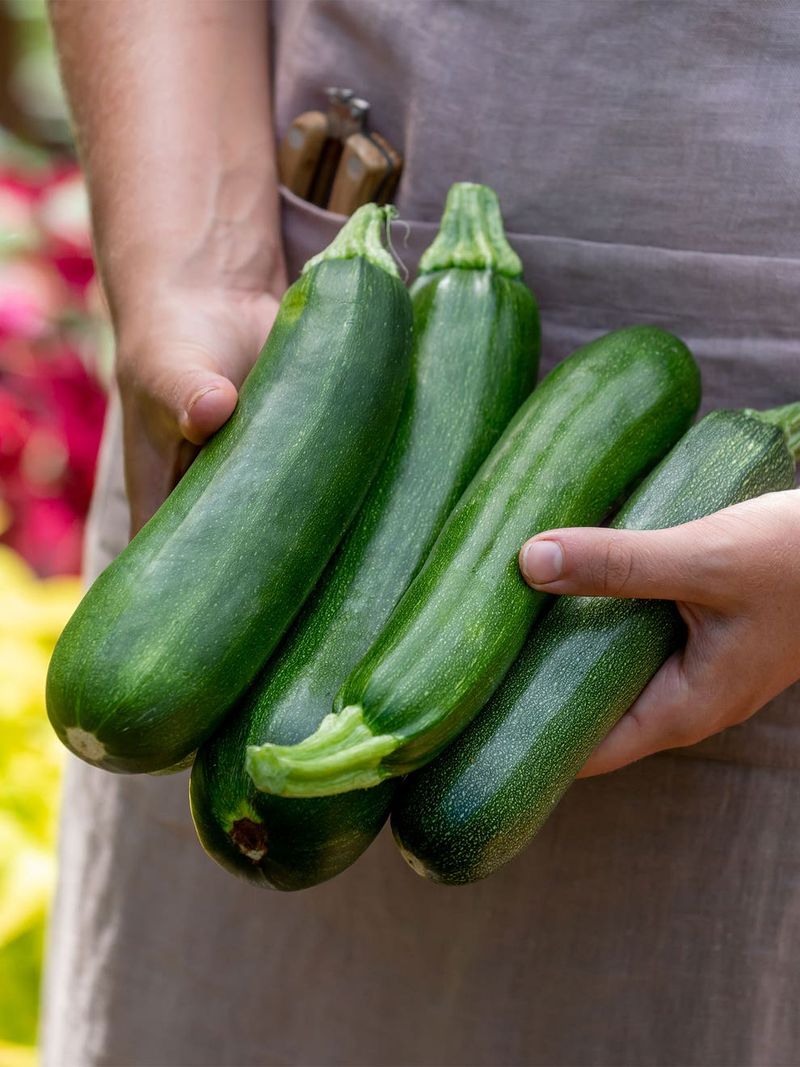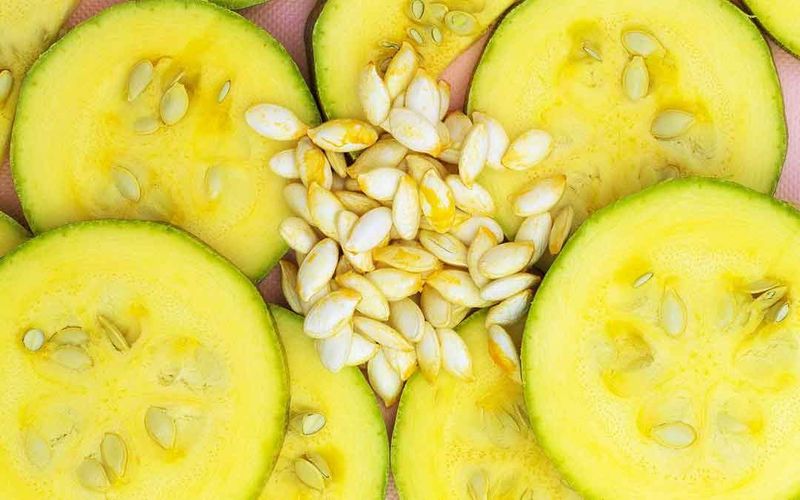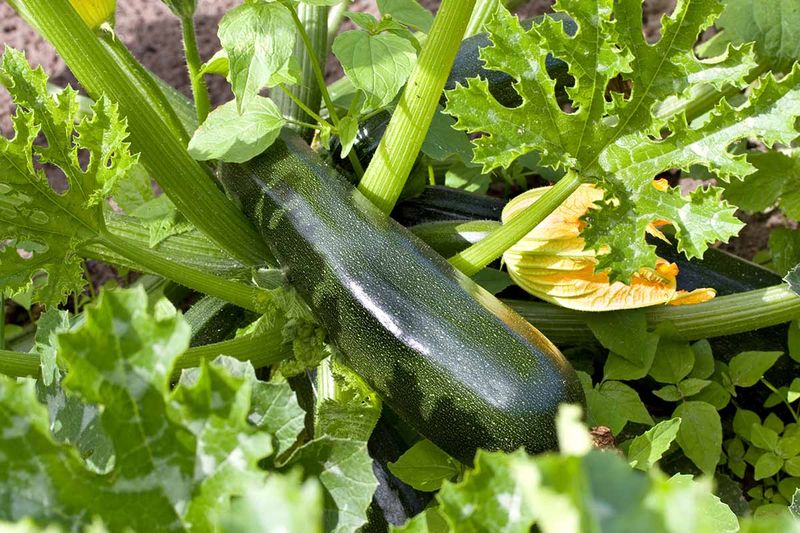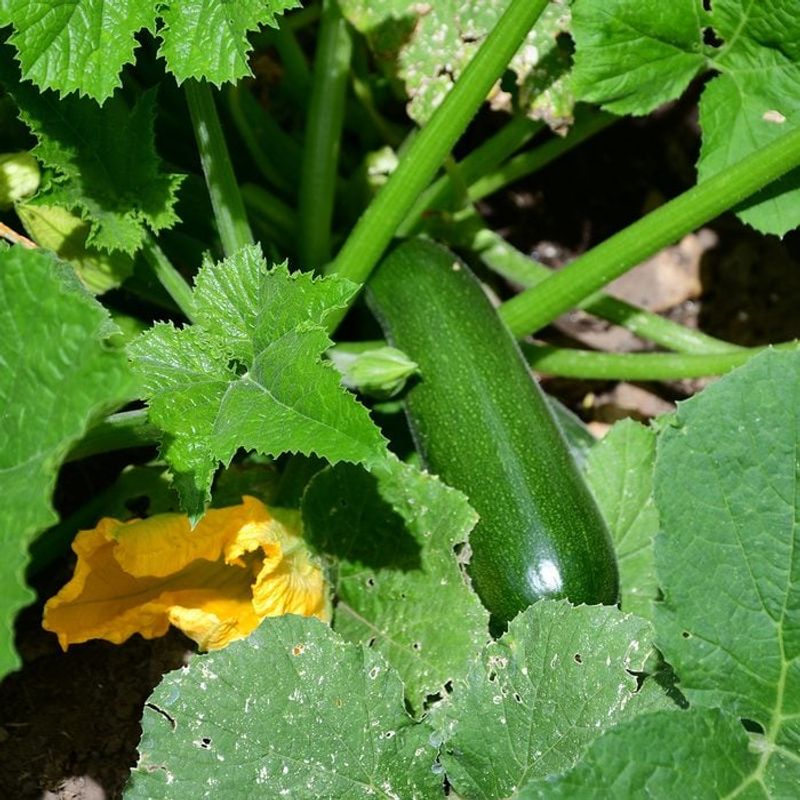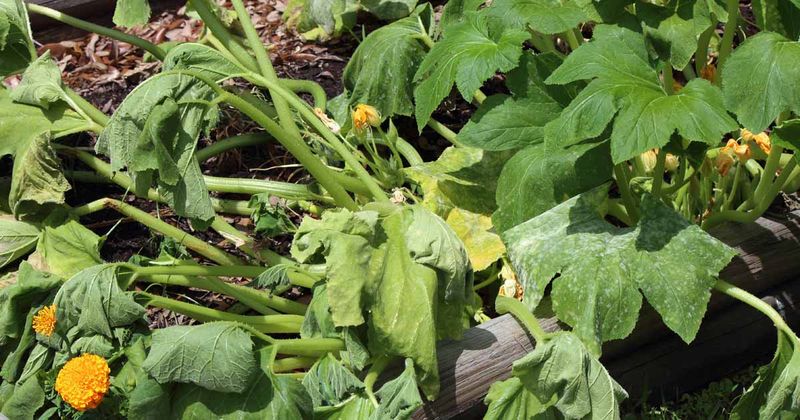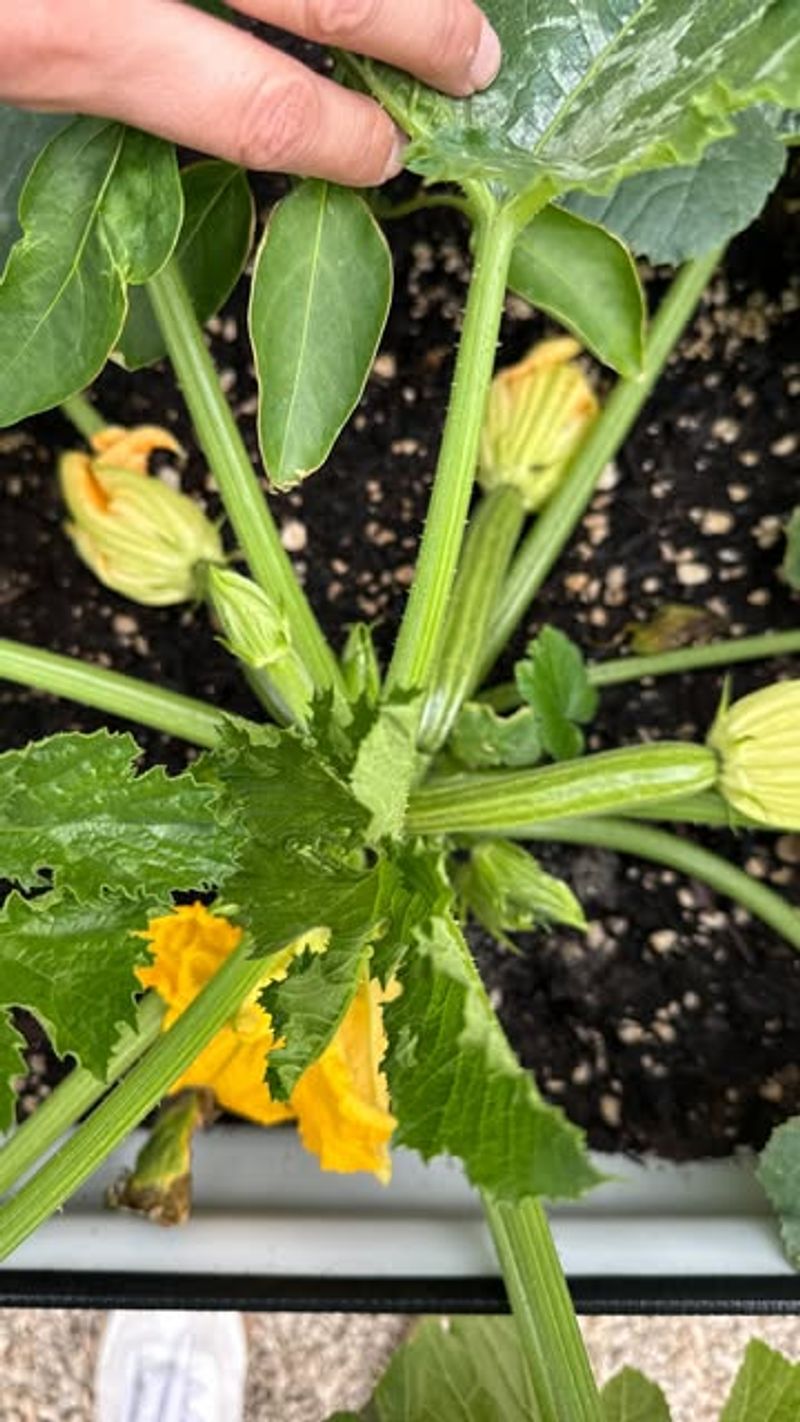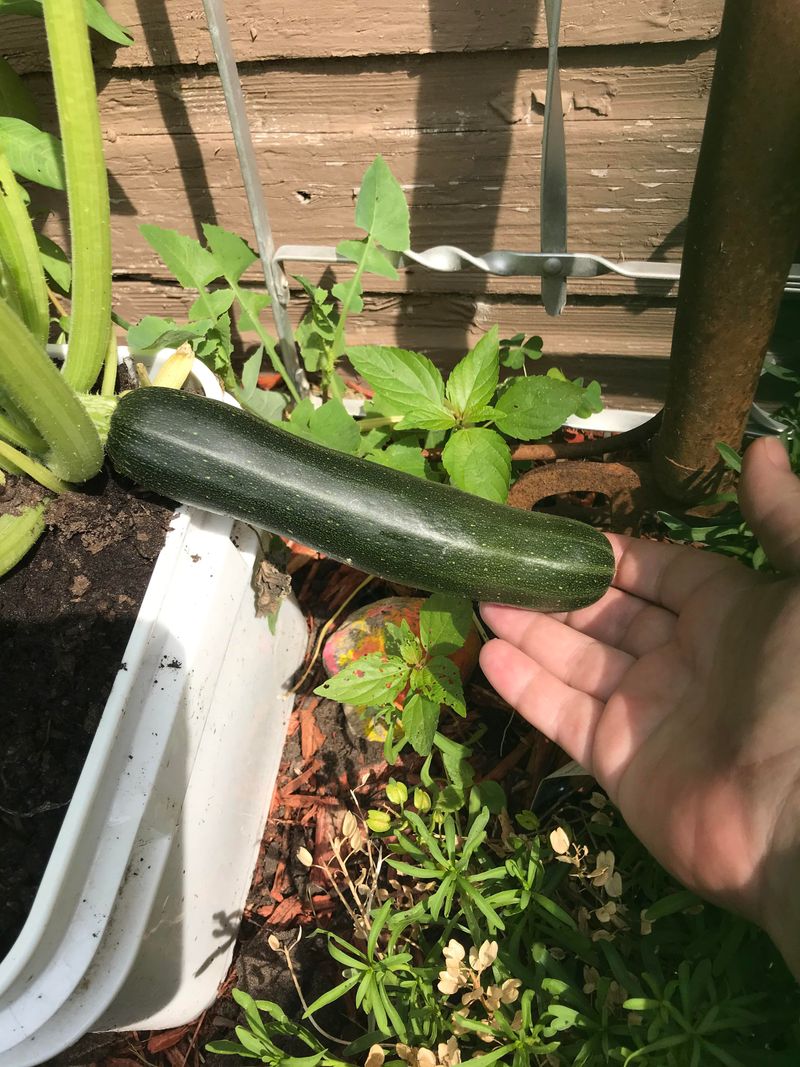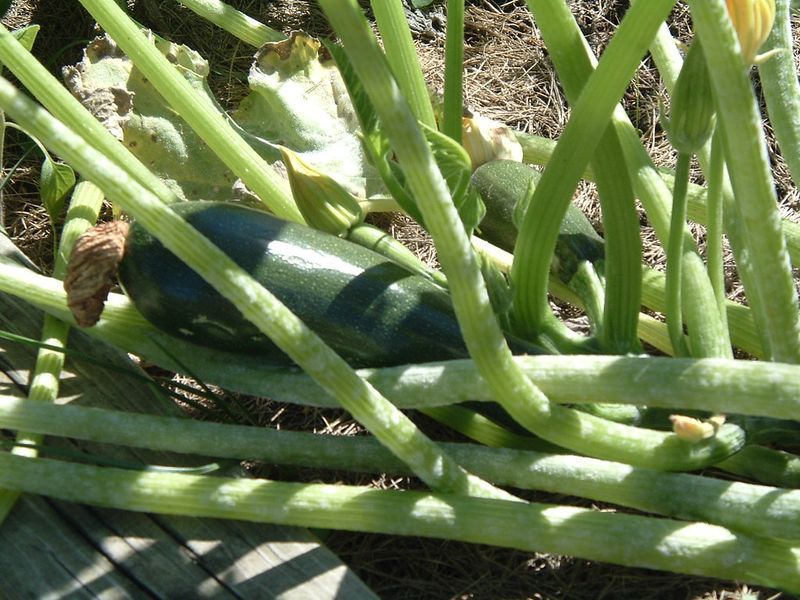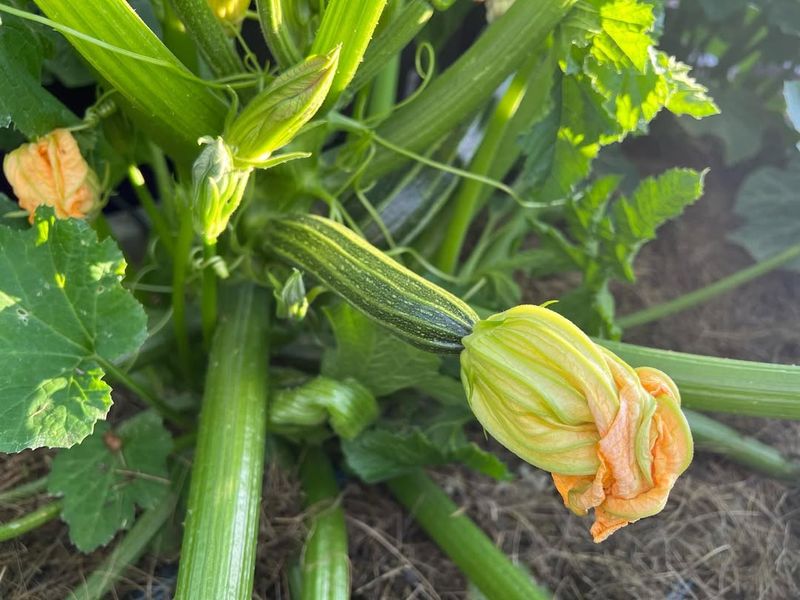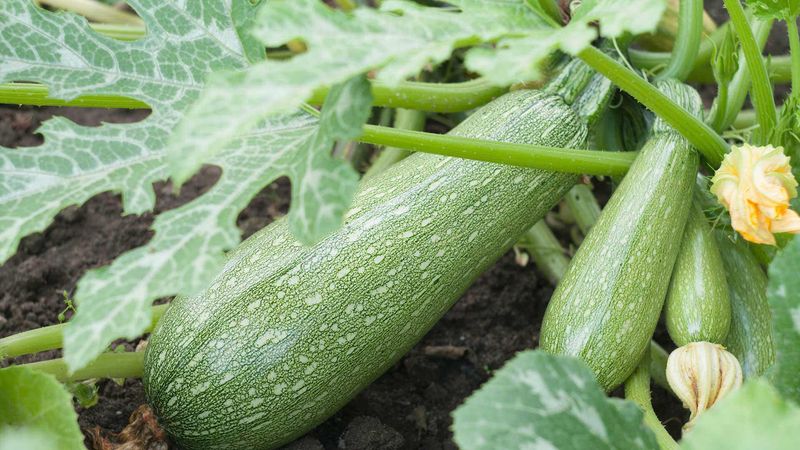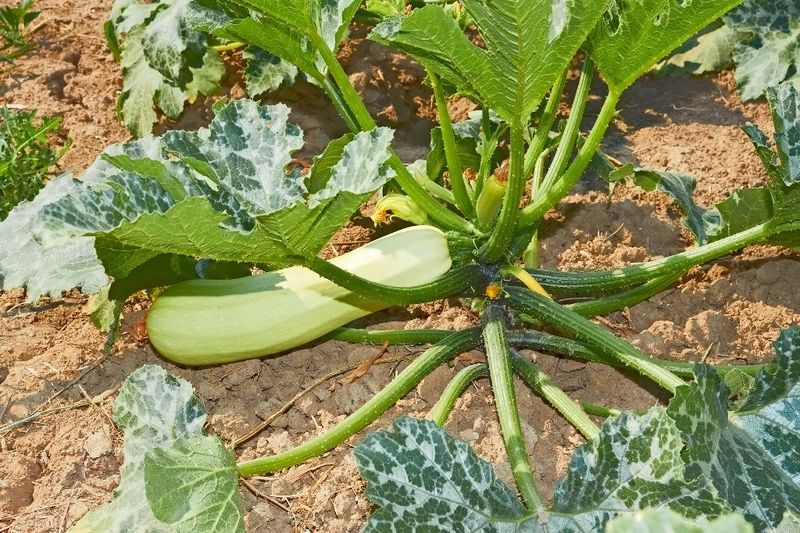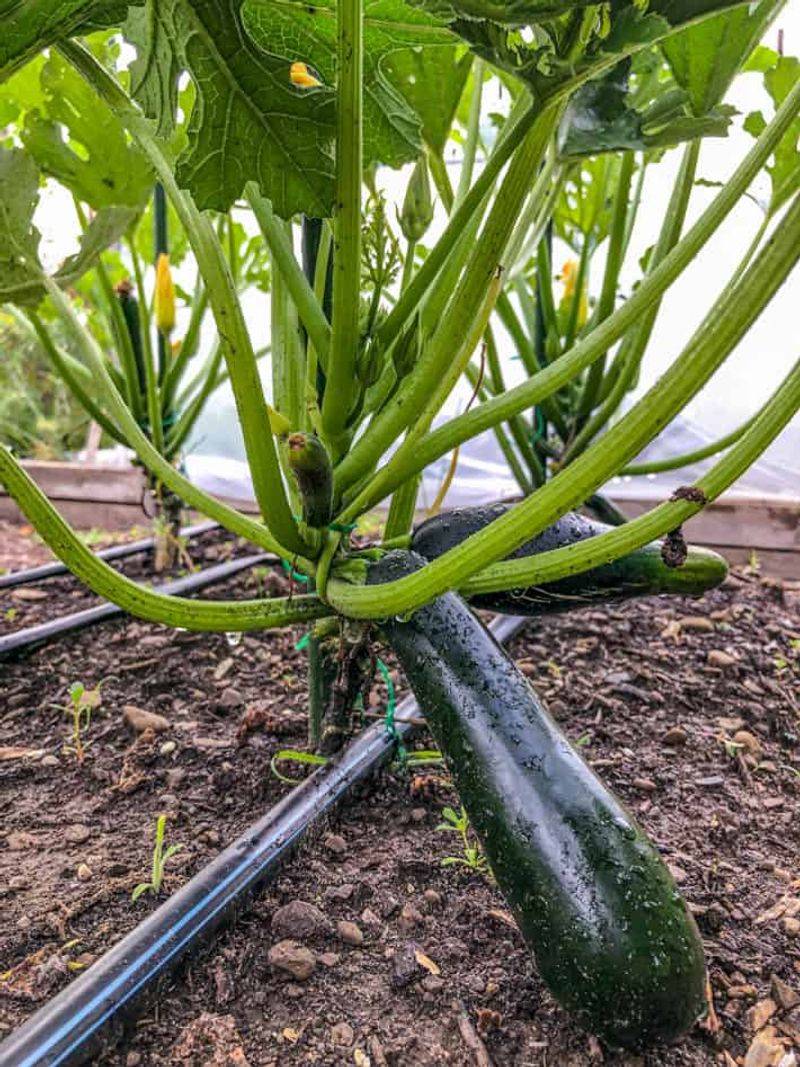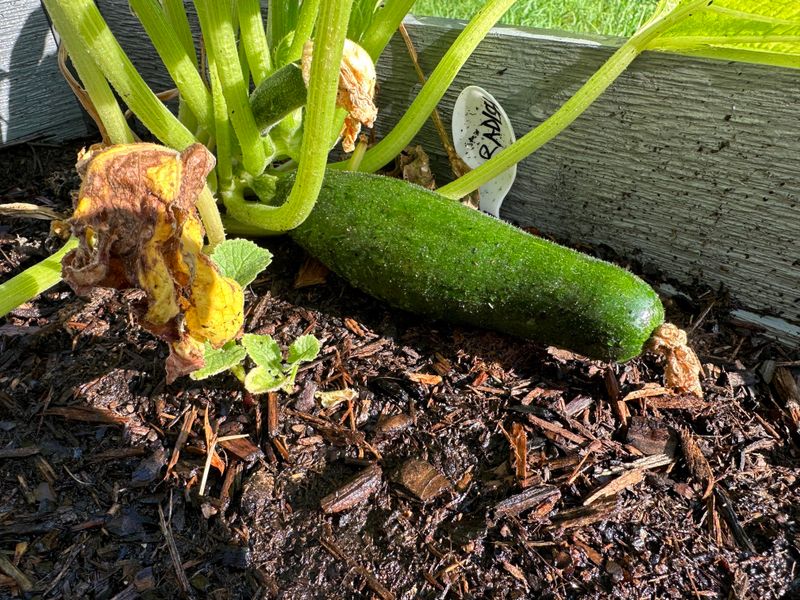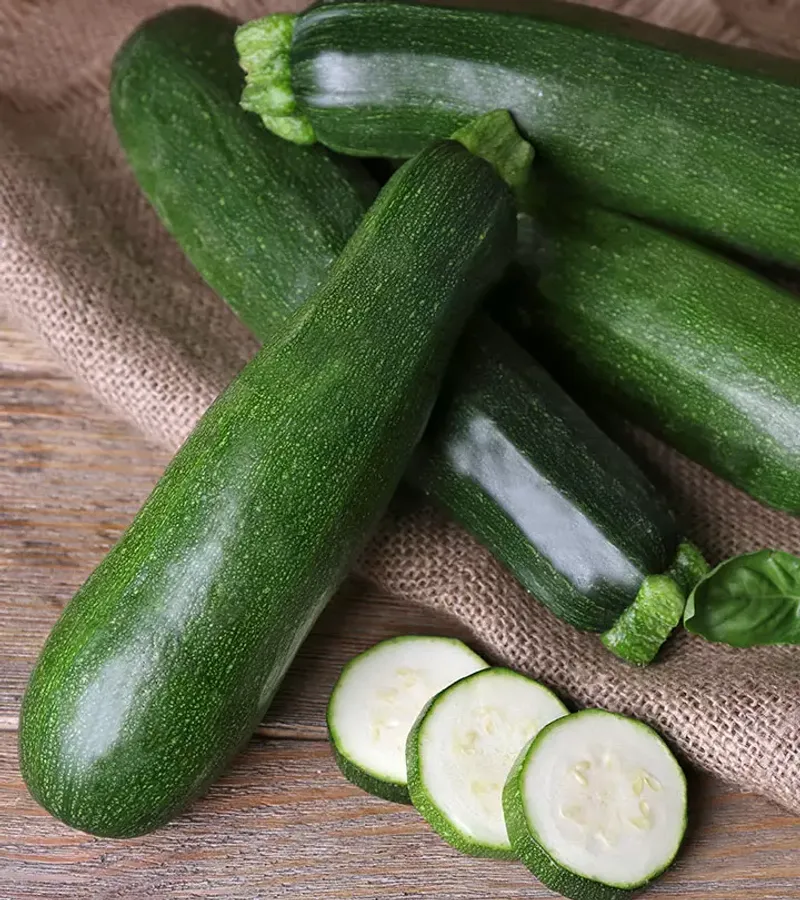Growing zucchini can be really satisfying, but knowing when to pick them makes all the difference. Harvest too early, and you miss out on full flavor; wait too long, and they get tough and seedy. I’ve learned that timing is everything to get those tender, tasty zucchinis your family will love.
For beginners and seasoned gardeners alike, watching for a few key signs helps you catch zucchini at their best. Size, skin texture, and even the flower can tell you when it’s time to harvest. Once you get the hang of it, picking zucchini becomes a simple, rewarding part of your gardening routine.
With these tips, you’ll enjoy zucchinis that are perfect for roasting, grilling, or tossing fresh into salads. Plus, harvesting regularly encourages your plants to keep producing all season long. Ready to get the most from your garden? Let’s dive into the secrets of zucchini timing!
1. Ideal Length Reached
Most garden varieties reach peak flavor when they measure between 6-8 inches long. Smaller zucchini offer sweeter taste and more tender flesh compared to their oversized counterparts.
When checking your plants, use your hand as a quick measuring tool – a medium-sized zucchini should be about as long as your hand from wrist to fingertips. I’ve found this simple method saves me from carrying a ruler into the garden.
Harvesting at this size also encourages the plant to produce more fruit throughout the season. Each time you pick a zucchini at the right size, you’re signaling the plant to channel energy into developing new squash.
2. Rich Green Color
The skin should display a deep, consistent green hue without yellowing patches. Different varieties may show slight color variations, but all should have a uniform, vibrant appearance when ready.
Yellow spots or fading color often indicate the zucchini is past its prime. During my early gardening days, I learned this lesson when I waited too long and ended up with pale, less flavorful squash that nobody in my family wanted to eat.
The stem area near the fruit should maintain its green color as well. When the stem begins to yellow or brown while the fruit is still small, it might signal a pollination issue rather than ripeness.
3. Firm But Tender Skin
Press your thumbnail gently against the skin – it should resist slightly but still be penetrable. Overly hard skin indicates the zucchini has grown too mature and will likely have developed tough seeds inside.
The skin should feel smooth and somewhat glossy, without wrinkles or soft spots. My garden mentor taught me this thumb test years ago, and it’s never steered me wrong when determining the perfect harvest moment.
Avoid picking zucchini with skin that feels too soft or shows indentations when pressed. These characteristics suggest the vegetable is either damaged or beginning to deteriorate, which will affect both flavor and storage life.
4. Manageable Seed Size
Young, ready-to-harvest zucchini contain small, undeveloped seeds that are barely noticeable when eating. Once the seeds grow large and firm, the surrounding flesh often becomes stringy and less pleasant to eat.
If you’ve harvested one zucchini from the same plant already, cut it open to check the seed development. This gives you a preview of what to expect from its siblings still growing on the vine.
Last summer, I left several squash on the plant too long, and the large seeds made them suitable only for zucchini bread. For stir-fries and fresh eating, smaller seeds provide much better texture and taste.
5. Glossy Exterior Shine
A harvest-ready zucchini has a natural sheen that makes it look almost polished. This glossiness indicates peak freshness and perfect moisture content within the vegetable.
Dull or matte-looking skin often suggests the squash is either underripe or has been on the vine too long. The first zucchini I ever grew taught me to wait for this telltale shine – picking too early resulted in less flavorful dishes.
The glossy appearance is most noticeable in morning light after dew has evaporated but before the afternoon sun becomes too harsh. This makes early to mid-morning an ideal time to check your plants and harvest.
6. Stem Condition
Look for a stem that’s still green and somewhat pliable, not woody or dried out. The point where the stem meets the zucchini should be full-sized but not bulging or swollen.
When cutting, leave about an inch of stem attached to the fruit. This helps prevent damage and extends storage life. One year I made the mistake of cutting too close, and those zucchini developed rot spots much faster than properly harvested ones.
A healthy stem also indicates the plant is still providing nutrients to the fruit. If the stem has started to shrivel while the zucchini is still growing, it may signal that the plant is struggling with disease or nutrition issues.
7. Finger Indent Test
Press your finger firmly against the zucchini’s skin. If it leaves a slight indentation that quickly springs back, it’s at the perfect stage for harvesting. This indicates ideal flesh density and moisture content.
Zucchini that feel too hard with no give typically have tough skin and stringy flesh. The first time I grew these vegetables, I waited until they were rock-hard – a rookie mistake that resulted in practically inedible produce.
Conversely, if your finger easily presses into the skin or the indentation remains, the squash may be overripe or beginning to rot. These specimens should be composted rather than brought to your kitchen.
8. Flower End Appearance
The blossom end of a perfectly ripe zucchini should be firm with a small, dry flower scar. Any remaining flower parts should have naturally fallen away, leaving a clean end that’s neither soft nor discolored.
Soft spots around the flower end often indicate the beginning stages of rot or damage from insects. After losing several promising squash to blossom-end rot in my second growing season, I now check this area carefully before harvesting.
The flower end should be proportional to the rest of the fruit. An unusually small or pinched blossom end might indicate poor pollination, which can affect flavor and texture even if the zucchini appears otherwise ready to harvest.
9. Consistent Girth Throughout
A harvest-ready zucchini maintains relatively even thickness from end to end. Significant bulging or tapering often indicates irregular growth or development issues that might affect quality.
The ideal diameter for most varieties falls between 1.5 to 2 inches. Anything substantially thicker usually means the squash has been left too long and may have developed a mealy texture inside.
My neighbor once proudly showed me a zucchini with a tiny stem end and hugely bulbous blossom end. While impressive looking, it proved tough and seedy when cooked – a good reminder that uniform thickness indicates better eating quality.
10. Easy Knife Penetration
Try the knife test on a similarly sized zucchini from the same plant. A harvest-ready specimen should allow a sharp knife to cut through with minimal resistance, indicating tender flesh perfect for cooking.
When the knife meets significant resistance or makes a distinct sound while cutting, the squash has likely developed tough fibers. Last season, I ignored this sign and ended up with zucchini that required twice the cooking time to become tender.
This test works best when you have multiple fruits and can sacrifice one to check maturity. The knife should slide through with just slightly more resistance than cutting through a ripe cucumber – clean and easy.
11. Days Since Flowering
For most varieties, zucchini reach peak harvest readiness 4-8 days after the female flower opens and is pollinated. Marking flowering dates on a garden calendar helps track development accurately.
The timing varies slightly based on weather conditions – warmer temperatures speed growth while cooler periods extend development time. During last summer’s heat wave, my zucchini went from flower to harvest-ready in just 4 days.
Watching this timeline helps prevent overlooking squash hidden under leaves. Female flowers have a tiny fruit at their base even before pollination, making them easy to identify and monitor as they develop into full-sized zucchini.
12. Weight Feels Right
A perfectly ripe zucchini feels surprisingly heavy for its size, indicating dense flesh full of moisture. Pick up the squash and assess whether it seems proportionally weighty in your hand.
Lighter-than-expected weight often means the inside has become pithy or started drying out. The first time I grew these vegetables, I was amazed at how substantial a properly harvested zucchini felt compared to the overgrown ones.
This weight test becomes more intuitive with experience. After harvesting a few properly ripe specimens, you’ll develop a natural sense for how a ready-to-pick zucchini should feel in your hand.
13. Hollow Sound When Tapped
Gently tap the side of the zucchini with your fingernail. A harvest-ready specimen produces a slightly hollow sound rather than a dull thud, indicating perfect flesh density and moisture content.
This sound difference is subtle but becomes more apparent with practice. My garden mentor demonstrated this technique during my first growing season, and it took several attempts before I could reliably distinguish the difference.
The hollow sound indicates that the flesh cells have reached ideal development – firm enough to hold structure but not so dense that they’ve become tough or woody. This perfectly balanced state offers the best flavor and texture for all cooking methods.
14. Ease Of Separation
When perfectly ripe, a zucchini can be harvested with a gentle twist or minimal knife pressure. The stem should separate cleanly without requiring excessive force or leaving ragged plant tissue.
Difficult removal often indicates the squash is either slightly underripe or has been left too long and developed a woody connection to the plant. Early in my gardening journey, I damaged several plants by pulling too forcefully on stubborn fruits.
Use garden shears or a sharp knife for the cleanest cut, especially if you notice any resistance. This protects the plant from damage and ensures it continues producing new fruits throughout the growing season.
15. Abundant New Growth
When your zucchini plant shows multiple new female flowers and developing fruits, it’s signaling that existing squash should be harvested. The plant naturally focuses energy on younger fruits if mature ones aren’t removed.
Regular harvesting encourages continued production throughout the season. One summer, I experimented by leaving some plants unharvested while regularly picking others – the frequently harvested plants produced nearly triple the yield over the season.
Look for a healthy balance of flowers, developing fruits, and harvest-ready zucchini on each plant. This ongoing cycle of growth indicates optimal plant health and suggests that mature squash should be picked to maintain this productive balance.
16. Skin Puncture Resistance
Test ripeness by gently pressing a fingernail against the skin. Ideal harvest time is when your nail meets resistance but can still make a small mark with moderate pressure. This indicates perfect skin development.
Excessively tough skin that completely resists nail pressure suggests the zucchini has grown too mature. After making this mistake with my first harvest, I learned that tough-skinned specimens require peeling before cooking, losing valuable nutrients in the process.
Conversely, if your nail easily punctures the skin with minimal pressure, the fruit may be immature or suffering from a deficiency. Properly developed skin provides just enough protection while maintaining tenderness – the sweet spot for harvesting.

